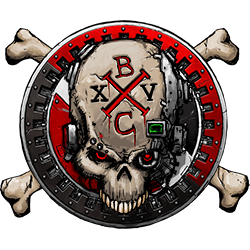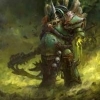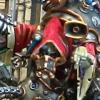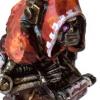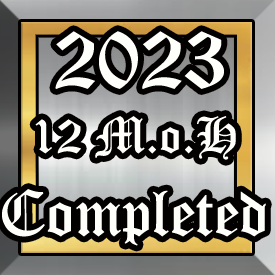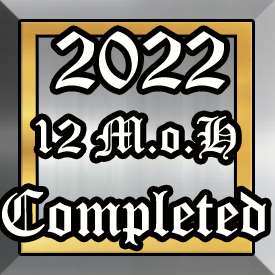-
Posts
1973 -
Joined
-
Last visited
-
Days Won
2
Rogue last won the day on August 14 2023
Rogue had the most liked content!
About Rogue

Profile Information
-
Location
Crediton
-
Faction
Red Brotherhood (GSC), Gorgons
Recent Profile Visitors
1461 profile views
Rogue's Achievements
-
 apologist reacted to a post in a topic:
Prescribed Terrain Setup
apologist reacted to a post in a topic:
Prescribed Terrain Setup
-
 Aarik reacted to a post in a topic:
Prescribed Terrain Setup
Aarik reacted to a post in a topic:
Prescribed Terrain Setup
-
 Inquisitor_Lensoven reacted to a post in a topic:
Prescribed Terrain Setup
Inquisitor_Lensoven reacted to a post in a topic:
Prescribed Terrain Setup
-
 The Neverborn reacted to a post in a topic:
Prescribed Terrain Setup
The Neverborn reacted to a post in a topic:
Prescribed Terrain Setup
-
 Gorgoff reacted to a post in a topic:
Prescribed Terrain Setup
Gorgoff reacted to a post in a topic:
Prescribed Terrain Setup
-
 Rogue reacted to a post in a topic:
Post your Genestealer Cults conversions!
Rogue reacted to a post in a topic:
Post your Genestealer Cults conversions!
-
 Rogue reacted to a post in a topic:
Uprising on Prawa V
Rogue reacted to a post in a topic:
Uprising on Prawa V
-
 Rogue reacted to a post in a topic:
Uprising on Prawa V
Rogue reacted to a post in a topic:
Uprising on Prawa V
-
 Rogue reacted to a post in a topic:
Uprising on Prawa V
Rogue reacted to a post in a topic:
Uprising on Prawa V
-
I think that idea of "What you're used to" has a big effect here. I mentioned being surprised by how much terrain was on the table at a recent tournament (pleasantly surprised, as it was more than I'd usually use, and so gave me much more cover than I'm used to). A friend of mine (playing Tyranids) kept losing to his regular Imperial Guard opponent, and wasn't sure why - he figured it was just because he was relatively new to the game. Turns out they were just playing with far too little LoS -blocking terrain. Not because of ill intentions on anyone's part, because that's what the opponent was used to and tended to set up for games. At some point, this friend and I played a doubles games into the Guard (with more Guard allied in). I was quite insistent on giving several LoS-blocking pieces around the centre of the table; the Guard player was surprised to find that his super-heavy tank, which was parked in his deployment zone, didn't have targets every turn. He was so used to playing with minimal terrain that he just expected that he could sit and shoot all game long. No wonder the Tyranids wee struggling to win. Again, I'm not suggesting shenanigans here - just if you mostly play garage-hamner in a small group, what's normal to you might be very different to what the designers intended or what most people play.
-
 Dr_Ruminahui reacted to a post in a topic:
Prescribed Terrain Setup
Dr_Ruminahui reacted to a post in a topic:
Prescribed Terrain Setup
-
 apologist reacted to a post in a topic:
Prescribed Terrain Setup
apologist reacted to a post in a topic:
Prescribed Terrain Setup
-
 Xenith reacted to a post in a topic:
Prescribed Terrain Setup
Xenith reacted to a post in a topic:
Prescribed Terrain Setup
-
 The Neverborn reacted to a post in a topic:
Prescribed Terrain Setup
The Neverborn reacted to a post in a topic:
Prescribed Terrain Setup
-
Felt about right. My doubles partner and I were pretty had three ridgerunners and three doomstalkers between us. We were able to hide them (the runners especially), and couldn't always line up targets, but that's what you want, generally speaking - if we want to shoot things, we need to consider position and anticipate enemy movement; it shouldn't be a shooting gallery. We faced Chaos armigers, a lancer grav-tank, dreadnoughts, a Necron ark, and a big knight across the event, and none of them had significant issues.
-
I always thought I had a lot of terrain on my table - four of the old Imperial Sector buildings, the killteam cathedral, lots of Mechanicus bits, half a dozen containers - until I played in a small doubles tournament at my FLGS last month. They had two big three-sided ruins in the middle, huge pieces in each deployment zone, and small bits elsewhere. Suddenly, I could deploy all my infiltrators in cover - like, ten genestealers and a patriarch completely hidden unless my opponent was practically in my deployment zone. And there were whole areas of the board that were hard to target without significant repositioning. It felt like a different game. And that's coming from someone who thought there was a lot of terrain on my own table. Apparently not.
-
 Rogue reacted to a post in a topic:
Post your Genestealer Cults conversions!
Rogue reacted to a post in a topic:
Post your Genestealer Cults conversions!
-
 Ulfast reacted to a post in a topic:
Red Brotherhood
Ulfast reacted to a post in a topic:
Red Brotherhood
-
Yeah, it was certainly a fun way to play. Very proactive, close-combat units getting to do their thing, rolling buckets of dice knowing that you just need a fairly average result to wipe something off the table :)
-
A friend and I play a local doubles tournament every year, and this weekend just gone was the first time I've taken the Cult (alongside Necrons). We won all three games and placed second overall (the only other team that won three scored way more battle-points than us) - it's very exciting, as we've capped out at 2-1 a couple of times, and never previously gone undefeated. I was running Biosanctic Broodsurge, with this list: Patriarch (biomorph adaptation) Primus Biophagus (predatory instincts) 10 neophytes 10 acolytes - six mining tools 10 genestealers 10 genetealers 3 ridgerunners (two mining lasers, one mortar) The Patriarch led one unit of genestealers; the Primus and Biophagus teamed up with the acolytes. We usually infiltrated both units of genestealers and the acolytes, but then used the Primus to pick up the acolytes into a turn one deep strike. The Neophytes and the mortar buggy held the home objective, and the other two went wherever they were needed. My friend brought three doomstalkers, a reanimator, six wraiths with a technomancer, three tomb-blades, three wraith-like destroyers. The wraiths could also infiltrate, the blades and destroyers played objectives, and the stalkers provided fire-support. We were able to use the combat units (genestealers, acolytes, wraiths) to apply tons of early pressure and gain control of the board - with so many threats active from turn one, we had a surprisingly good survival rate, as we often killed everything in the immediate vicinity, limiting how much damage we could take in return. The Patriarch's stealers were good into various hard targets, including armigers, sanguinary guard and custodes wardens; and having enough resurgence points to bring back which ever unit of stealers died first meant that I could be really aggressive and still have turn two/three threats. The acolytes were a bit of a surprise package, and chewed through whatever was put in front of them. In the third game, they finished off a warden unit after the Patriarch's unit fell short - the acolytes deleted the last two and an attached hero in a single turn, then turned around and counter-charged a knight, taking nine wounds off and leaving it ripe for death by doomstalker in our turn two. The combination of the Primus, Biophagus and Biosanctic was really strong: they get +1 to charge, and then +1 attacks when they do, meaning 18 mining weapon attacks that hit on 3s with full rerolls and lethal hits; they can either get +1 to wound infantry from the Biophagus, or +1 to wound vehicles and monsters from a stratagem (on top of native anti-vehicle 4+) - it means you're looking at around 16 hits, wounding on 2s into most infantry, -2AP (or -3 with crossfire from a ridgerunner) and 3 damage (enough to one-shot a custodes, as it turns out). I'm not sure how I'd turn this into a 2000 point list of pure GSC, but I think I'd look at three Rockgrinders as fire-support, then small neophyte and acolyte units for objective play. Maybe aberrants, but it would be tempting to go with another 10 genestealers, just to have 30 of them infiltrating into midfield from the get-go...
-
I've quite enjoyed it, so far. I was finding the random element frustrating, and generally disheartening - I usually felt that I was rolling low for returning units, and in the few games where I rolled high, I then felt bad for my opponent. With the resurgence points, I can plan my list and tactics around returning units. For example, at 1000 points and 6 resurgence points, U can bring back 10 genestealers, or ten acolytes and 5 acolytes, or three lots of five acolytes. All three options have potential uses, depending on how the game goes. I have a tournament coming up next week - it's a doubles thing at the local place. My 1000 points includes 20 genestealers and 10 acolytes, all of which are likely to pile straight into the enemy lines turn one. Knowing that I can definitely recycle one of those units (probably the genestealers) means I have a free second wave coming in, and effectively having 30 stealers feels like a handy psychological weapon too.
-
 Rogue reacted to a post in a topic:
GSC on Eggsus IV
Rogue reacted to a post in a topic:
GSC on Eggsus IV
-
 Rogue reacted to a post in a topic:
Ruins in square bases
Rogue reacted to a post in a topic:
Ruins in square bases
-
 Rogue reacted to a post in a topic:
Ruins in square bases
Rogue reacted to a post in a topic:
Ruins in square bases
-
 Rogue reacted to a post in a topic:
Ruins in square bases
Rogue reacted to a post in a topic:
Ruins in square bases
-
 Rogue reacted to a post in a topic:
Ruins in square bases
Rogue reacted to a post in a topic:
Ruins in square bases
-
Thanks everyone - that's been helpful.
-
Thanks chaps. One clarifying question. If we're playing that ruins are always LoS blocking on the ground floor (regardless of any windows or gaps on the ruin piece), does that extend to the whole ruin footprint? Or is the footprint just conferring benefit of cover if my unit can be seen across it? What if there were two corner pieces on adjacent corners of the same footprint, with a gap (say 1") between them - would a model visible through that gap be visible or obscured?
-
I see a lot of battlefield photos with ruins standing on square or rectangular bases - often clear perspex or similar. In a lot of cases, the rectangular footprint might only have a single corner ruin on it. How does that work in game? Is the whole footprint counted as a ruin? How does that work if line-of-sight doesn't cross any part of the physical ruin piece? Could I drive a vehicle over the footprint if it doesn't pass through the physical ruin? And if not, what's the point of the footprint? I realise this is aching obvious to lots of people, but I've never used footprints like that, and I'd really like to know what they're about. Thanks in advance.
-
I like it as an idea, and it feels very fluffy. But it's the second GSC detachment that kinda requires that you have a whole different army to dip into. Which I don't. If I want to play this, I need to go buy, build and paint 1000ish points of Nids (which are then only relevant when I'm playing this specific detachment). And by the time I've done that (partly because I paint slow, and partly because I don't have the cash to drop on that much plastic at once), it'll likely be 11th edition anyway. Given that we already have the Brood Brother Auxilia detachment, that's now 33% of our detachment options that need a different army to play. I realise that I'm being grumpy, but I've been enjoying the whole Grotmas thing as an observer. Then we finally get to the Cult, and it's a detachment I like the look of, but I'm not going to get to play. Bah, humbug.
-
So, a very new look to Clut Ambush, then. The random element is completely gone, replaced with a pool of resurgence points. What do we all think? Not that we need to be super-competitive with things, but I reckon our most point-efficient option (at 2000 points) is to use all 10 resurgence points on metamorphs - we can recycle 25 metamorphs, which means we get an extra 400 points to play with (20% of our starting force). Of course, that's superficially less than the 33-50% we might expect over time with the old rule. But Cult Ambush only applies to certain units, so we weren't getting back 33% of 2000; assuming 1000 points of eligible units, we might get 500 points back if they all died in the first two turns, or just 330 points back if they died from turn three onwards. In that context, 400 feels about right. (Alternatively, we could bring back two small aberrant units, recycling just 270 points, but that might be the right play in some games. Helpfully, we can make that decision on the fly, which gives way more tactical flexibility than relying on blind chance.)
-
Today, my eldest played his first game of 40k. He's only 5, so we simplified things a bit, and just had his tactical squad (including the two he's painted) against ten neophytes and five acolytes. It was a resounding victory for the Marines, who brutally gunned down the insurgents. He was very pleased with it all.
-
Warhammer popped up as a question on this evening's Brain of Britain. The question itself was something like, "Space Marines, Blood Angels and Grey Knights appear in which game produced by Games Workshop?", with the contestant confidently responding "Warhammer 40,000". "Yes, it's also known as Warhammer 40k" adds the host before they move on. Not something I expected to hear on Radio 4, but there we are - properly establishment now :)
-
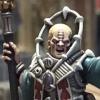
“Mordecai’s Chosen” - Crusade Force
Rogue replied to Captain Durante's topic in + GENESTEALER CULTS +
Those are some good-looking genestealers.
